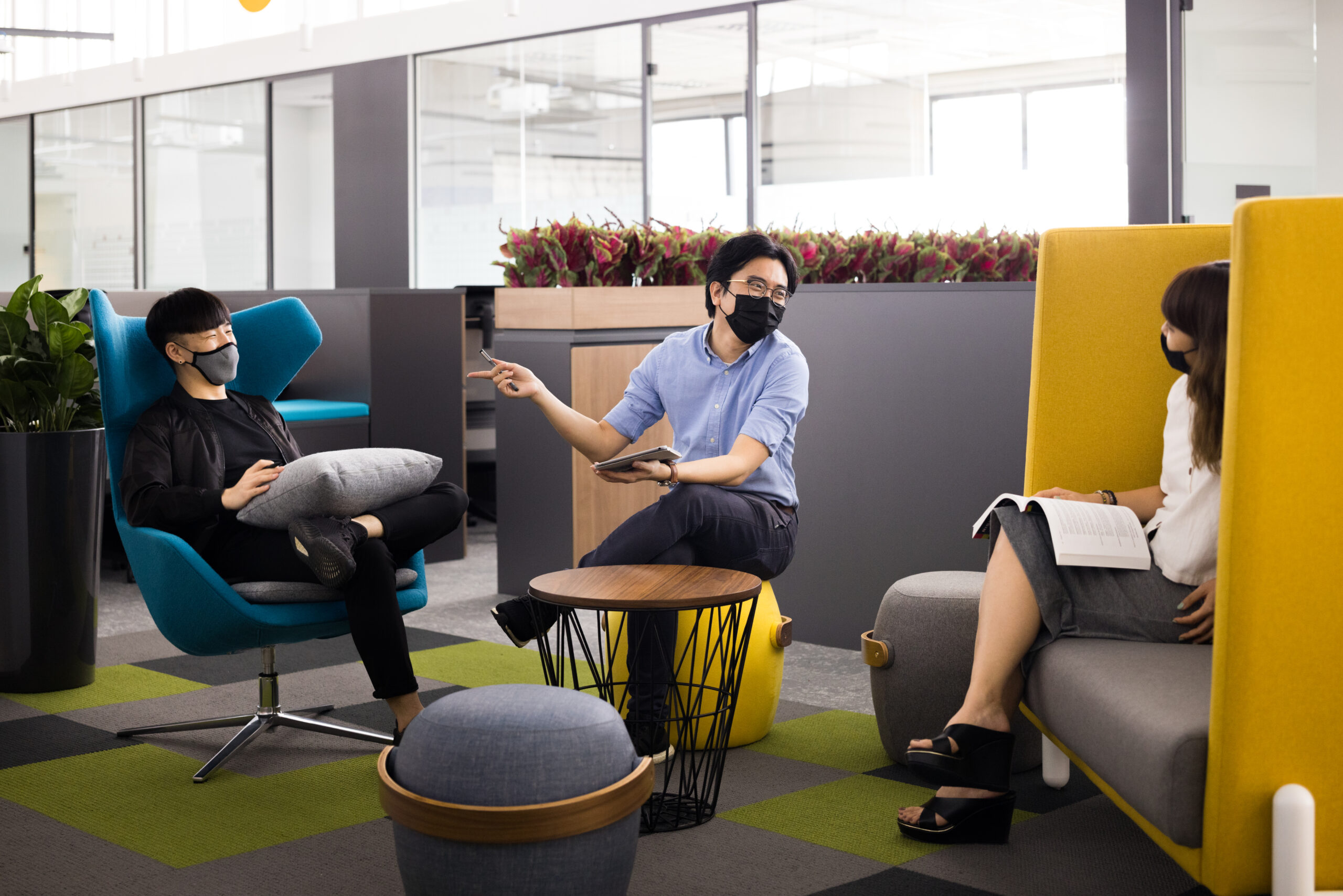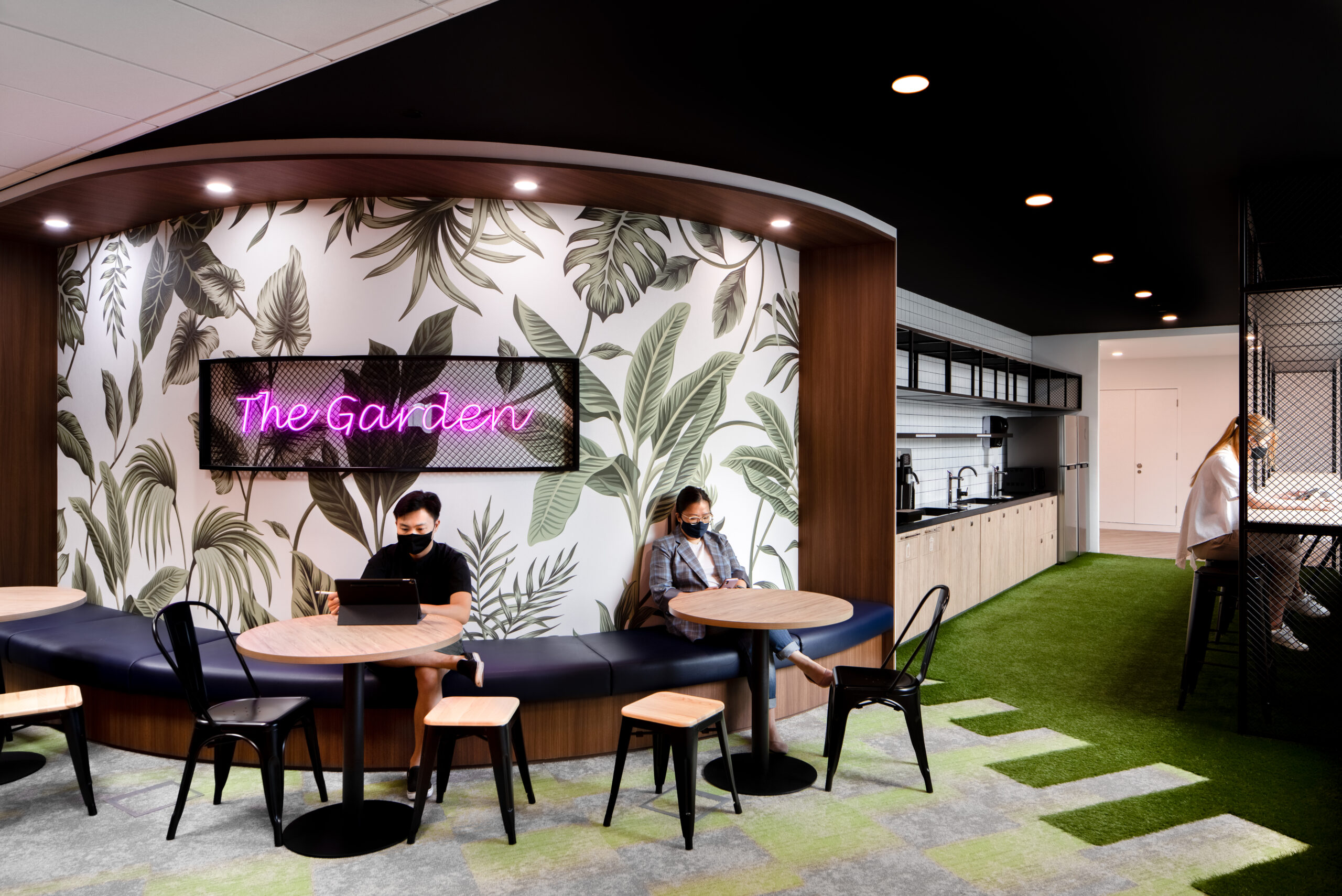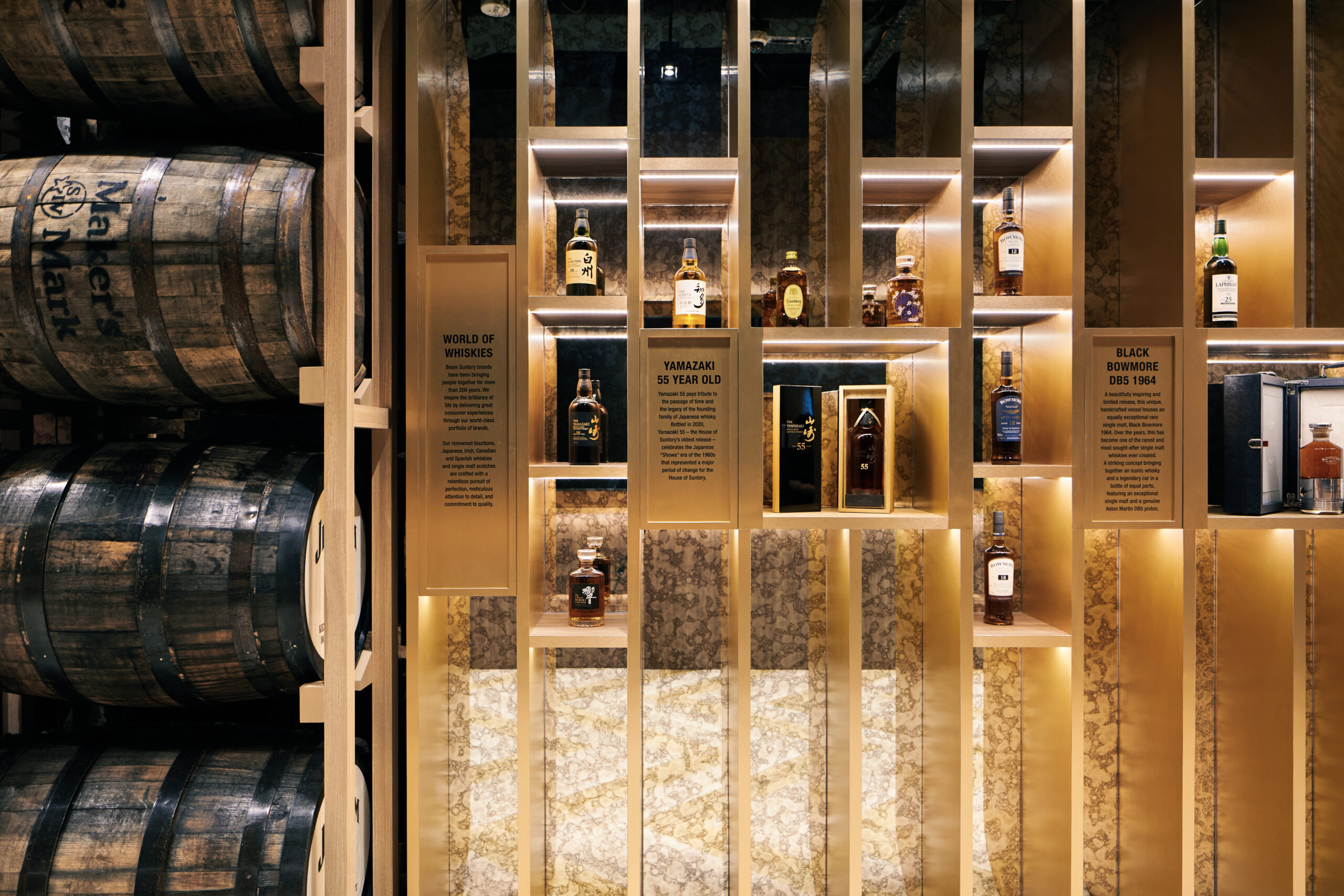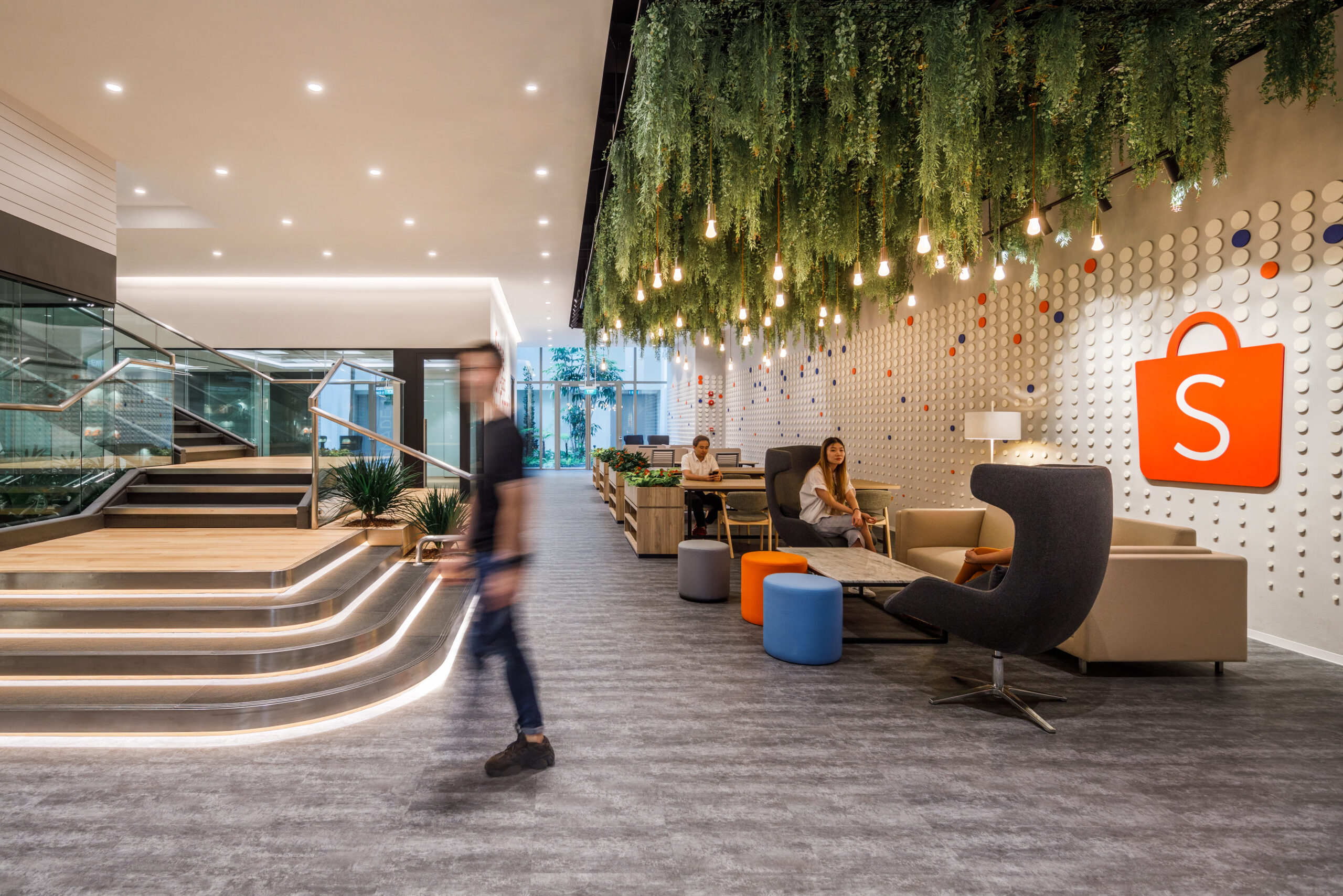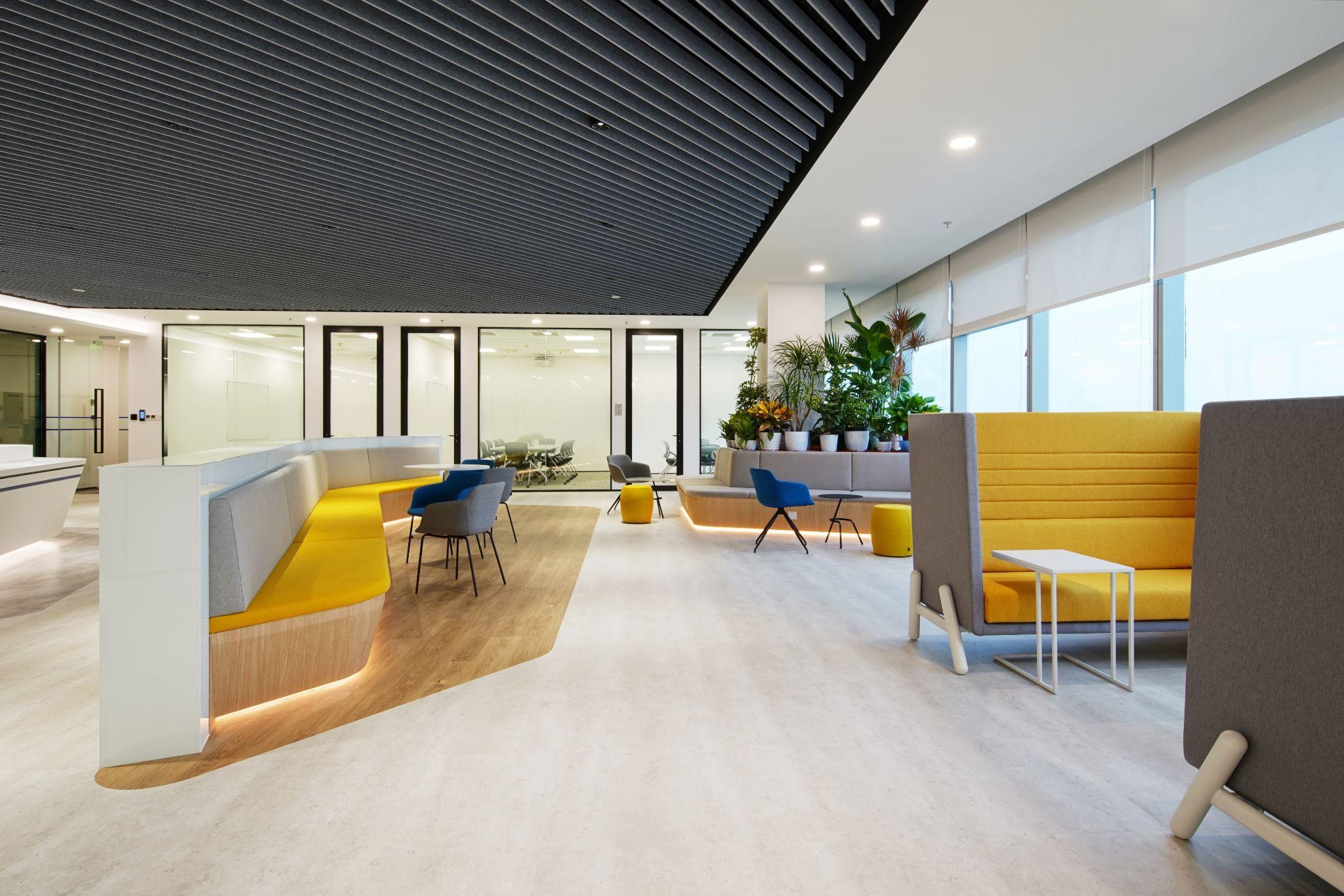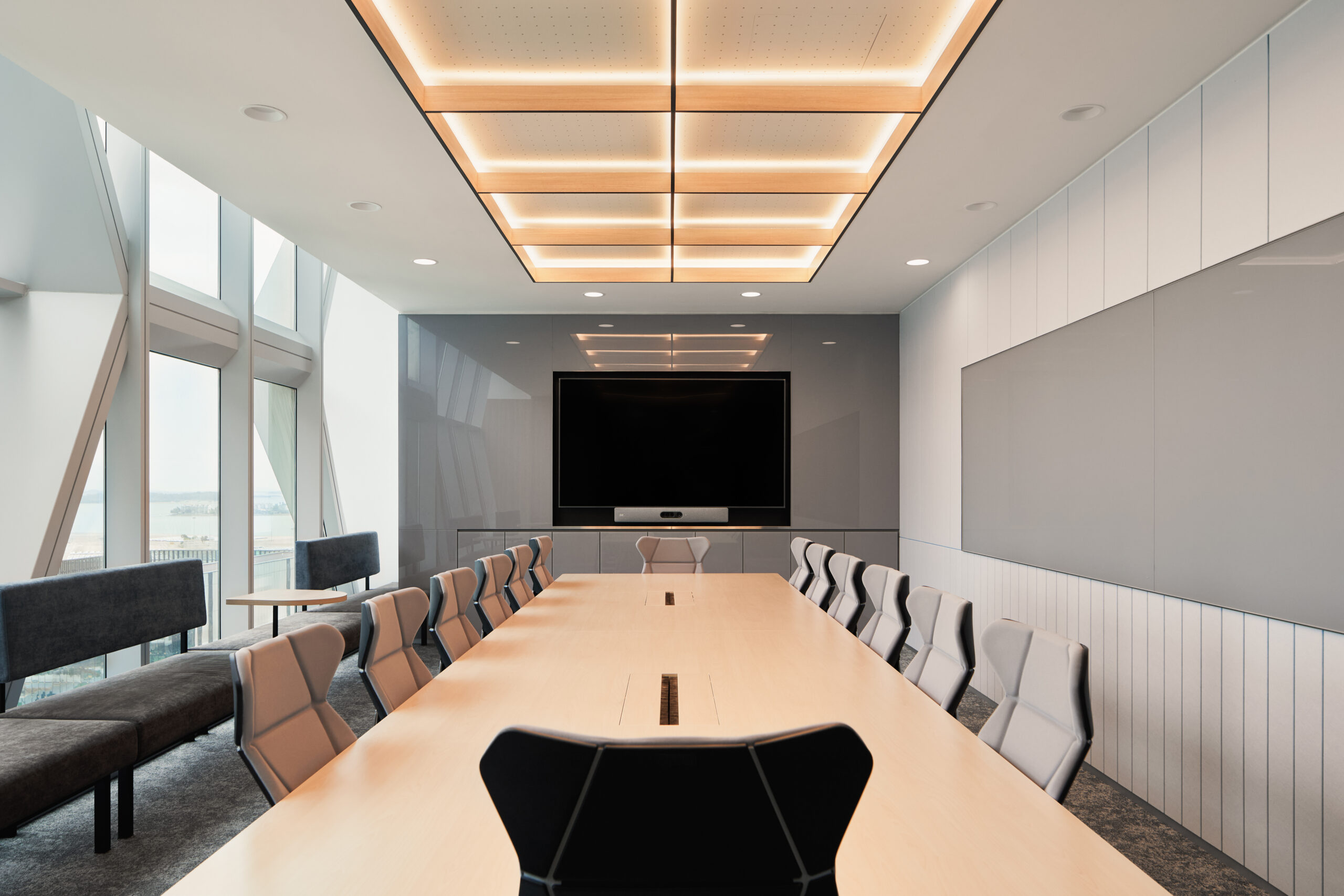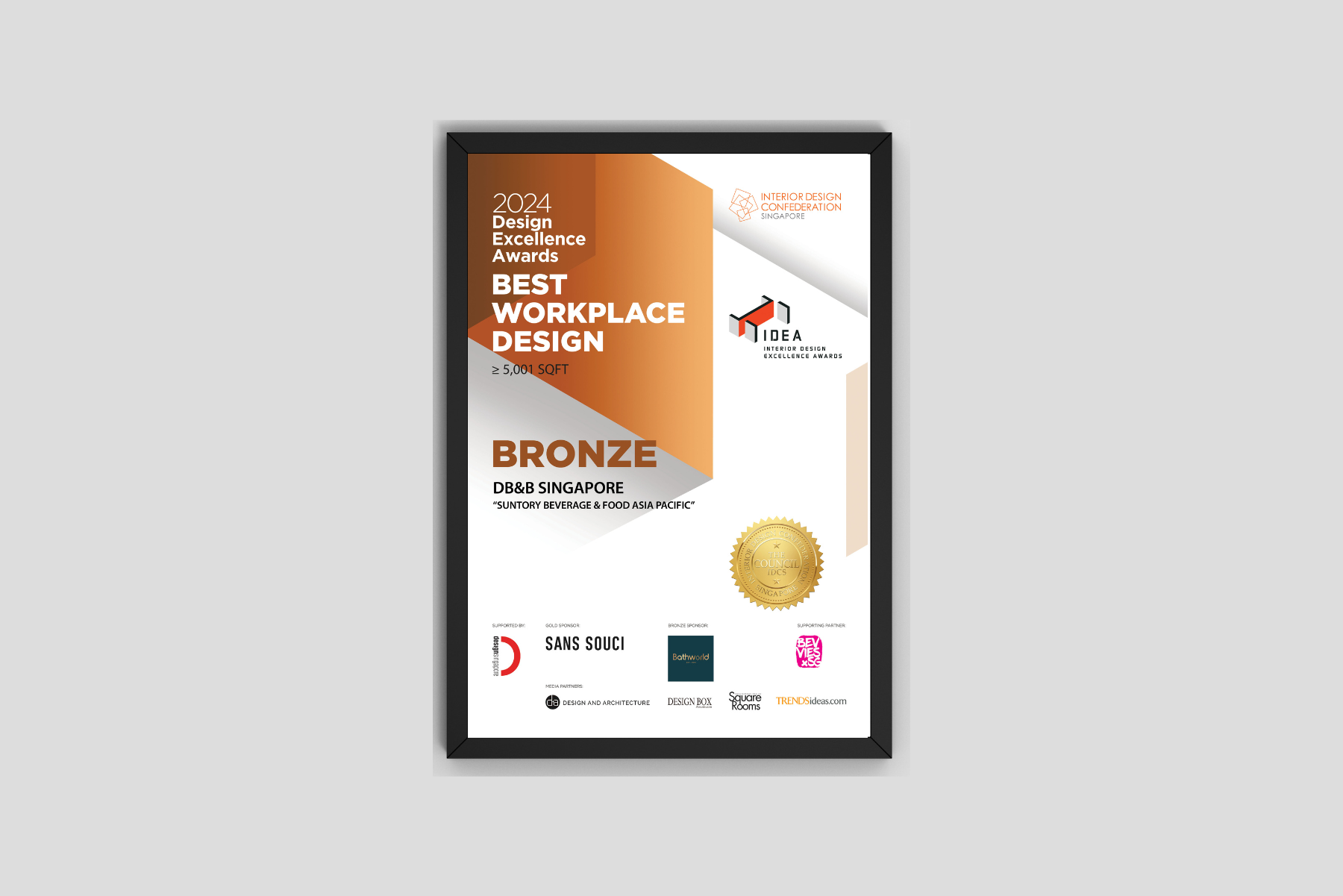The Role of Psychogeography in Hybrid Office Designs
Psychogeography is the study of how the environment affects emotions and behaviour, and it relates to office design by creating emotionally resonant and inspiring spaces to enhance employee satisfaction and engagement. By employing emotional mapping and strategic design elements, the workplace can transform into an environment that not only meets functional requirements but also emotionally engages employees, offering inspiration and solace throughout their work journey.Transformative Design Strategies in Practice
Transitional Doorways: They symbolise a passage from the bustling outside world into the focused environment of the office. Designers can emphasise this journey by employing distinct textures, a palette of colours, and strategic lighting to delineate these thresholds, thereby setting the stage for employees to mentally shift into their professional roles as they enter.
Guiding Illumination: The strategic use of lighting, especially the soft glow of natural sunlight, is pivotal in shaping the flow and concentration within an office landscape. Sunbeams streaming through windows can beckon employees to shared spaces or provide gentle illumination in tranquil nooks for solitary work. Similarly, artificial light can be provided to create visual pathways, demarcating different functional zones and enhancing the overall navigability of the office environment.
The Palette of Productivity: Leveraging the psychology of colour is an ingenious way to sculpt the emotional contours of a workspace. Shades of blue and green, embodying the cool end of the spectrum, are conducive to serenity and focus, ideally suited for areas dedicated to individual tasks. On the other hand, the warm vibrancy of yellows and oranges can invigorate and spark innovation.
Harmonising Work with Sound: The auditory landscape of an office can profoundly influence both concentration and privacy. By integrating materials that dampen noise and generate a background hum of white noise, a sense of acoustic confidentiality can be established. In contrast, designing specific areas to amplify natural sound can energise collaborative zones, fostering dynamic exchanges and teamwork.
Cultural Narratives in Spatial Design: Weaving cultural narratives and artistic elements into the fabric of office design not only enhances aesthetic appeal but also infuses the environment with stories and creativity. Displays of art, historical artefacts, or design features that mirror the company’s heritage and ethos can cultivate a unique identity and foster a sense of community.
Biophilic Design: Integrating elements from nature into the office not only purifies the air but also bolsters mental health. Features like green living walls, indoor botanical gardens, or simple potted plants on desks can create a seamless connection between the natural outdoor world and the indoor office environment, fostering a tranquil and rejuvenating atmosphere for employees.
Flexibility and Evolution in Workspace Design: With the employment of movable walls, multipurpose furniture, and modular setups, the office can seamlessly transition from a space of communal innovation to a private haven for focused tasks, embodying the psychogeographic ideal of a responsive and ever-changing environment.
Crafting the Future Workspace: Embracing Hybrid Office Design
As we sail into the future of work, hybrid office design stands at the helm. A burgeoning preference among employees for hybrid work models has been noted, signalling the need for businesses to adapt swiftly. This approach to office design is not just about creating varied workspaces but about intentional design that embraces flexibility, central community spaces, and data-driven planning.
The benefits are tangible: increased productivity, a better in-office experience, and the ability to draw and retain talent. The hybrid workplace is more than a fleeting trend—a cultural shift towards diverse and flexible working environments.
The Pull of Physical Spaces
The allure of a well-designed physical office can be magnetic. Weaving in employee feedback to tailor office design ensures that the space is not just a place but a destination that beckons for collaborative work. It is about crafting environments that resonate with the daily rhythms and needs of the staff, making the office a place they want to return to. It is a dance of design, where the physical environment echoes the company culture, fostering a sense of belonging and productivity.Bridging the Gap for Remote Workers
Even as we celebrate the flexibility of hybrid work, it’s paramount that our remote colleagues remain tethered to the heart of the company. Hybrid offices are not just physical spaces but bridges that connect remote workers to their in-office counterparts. They should radiate a warmth that spans the digital divide, ensuring remote team members feel that vital emotional connection to their peers and the company’s pulse. Embracing remote work as a part of the hybrid model is essential for maintaining this connection. Regular communication and inclusion in team activities are the lifelines that prevent feelings of detachment.The Essence of Hybrid Office Layouts
The hybrid office layout is a symphony of spaces that harmonise the needs of both in-office and remote workers. It is an intricate design that marries face-to-face collaboration with the independence of remote working. The transformation of office spaces into flexible, activity-based zones stems from careful data analysis of how spaces are used, ensuring every square foot serves a purpose, be it for collaboration or focused work. The evolution of office furniture reflects this shift, with pieces now designed to cater to flexibility, mobility, and functionality.Zones for Collaboration and Focus
Within the hybrid office, the creation of zones for collaboration and focus is a testament to adaptability. Some key features of the hybrid office include:- Flexible furniture and technology like movable desks and digital screens that enable spaces to transform in tandem with the task at hand
- Ergonomic designs that prioritise employee well-being and comfort
- Infusion of natural light to create a more pleasant and productive work environment

